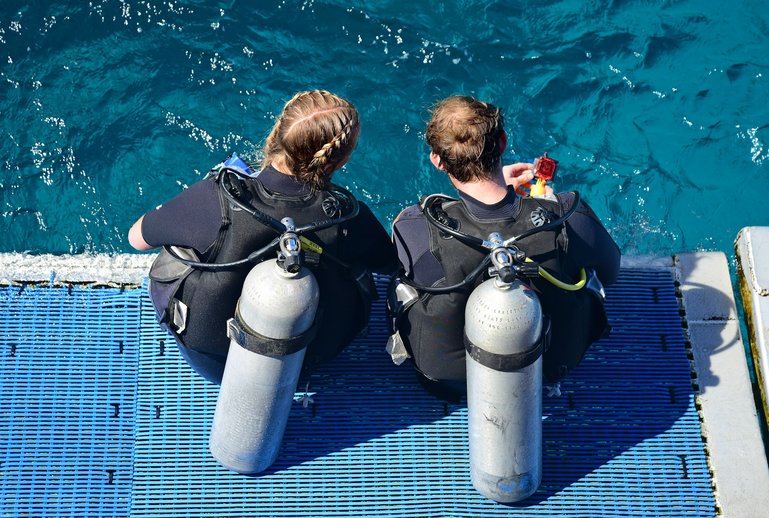Discover the thrilling world of wreck diving, a captivating pursuit reserved for the most skilled divers. These submerged relics offer an unparalleled glimpse into history, shrouded in mystery and marine life. Equip yourself with the right tools and knowledge to safely explore these underwater treasures.
For those drawn to the mysteries beneath the waves, wreck diving presents an irresistible challenge. The allure of exploring sunken ships, particularly around destinations like La Paz and Cabo San Lucas, offers experienced divers a unique adventure. However, such endeavors are not without their risks, making it crucial to be well-prepared and knowledgeable about scuba gear. This specialized activity demands not only skill but also a deep understanding of both equipment and safety protocols.
Understanding the Dive
Wreck diving is more than just a dive; it's an exploration into history and nature combined. The challenges presented by these dives are unique compared to open-water diving. Sunken vessels can create complex environments filled with tight spaces and potential hazards like entanglement risks. However, the rewards are significant as you navigate through history, encountering artifacts and structures frozen in time.
These underwater sites often pose navigational challenges that require precise buoyancy control and spatial awareness. This means that even seasoned divers need to approach with caution and respect. Additionally, factors such as visibility and currents can vary greatly around wrecks, adding another layer of complexity to your dive plan. Mastering these aspects can transform a challenging dive into an unforgettable journey.
Each shipwreck tells its own story, from commercial vessels laden with cargo to military ships echoing past battles. As you swim through these submerged narratives, the experience becomes both educational and thrilling. Proper preparation ensures that divers can safely unlock these stories while preserving the integrity of the site for future explorers.
Essential Scuba Gear
Success in wreck diving heavily relies on having the right scuba gear at your disposal. A reliable dive light is indispensable for illuminating dark interiors and enhancing visibility in murky waters. Additionally, a cutting tool is crucial for safety, allowing you to free yourself if entangled in fishing lines or other debris commonly found around wrecks.
A redundant air supply system, such as a pony bottle, provides an extra level of security should your primary air source fail during the dive. This backup can be lifesaving in enclosed environments where reaching the surface quickly isn't an option. Furthermore, utilizing a dive computer ensures you monitor depth and time accurately, preventing decompression sickness.
Equipping yourself with a spool or reel helps in maintaining orientation within the wreck by allowing you to lay lines for navigation. This precaution is vital for ensuring you can find your way back out of intricate ship corridors safely. With these essential pieces of equipment, divers can enhance their wreck diving experience while prioritizing their safety.
Top Scuba Diving Spots in Mexico
Mexico offers a plethora of diving spots suitable for both beginners and seasoned professionals. Cozumel, known for its crystal-clear waters and vibrant marine life, is perfect for beginners. The gentle currents and colorful reefs make it an ideal starting point for those new to the underwater world.
For more advanced divers, the waters around Isla Mujeres present a thrilling challenge. The underwater museum, MUSA, features over 500 sculptures, creating a unique diving experience. Meanwhile, experienced divers can explore the Cenotes in the Yucatan Peninsula, where freshwater and saltwater meet in a mystical underground world.
For those seeking a true adventure, the Revillagigedo Islands, often referred to as the "Galapagos of Mexico," offer encounters with large pelagic species like manta rays and sharks. This remote location is best suited for professional divers looking to experience the untamed side of Mexico's marine offerings.
Safety First
The intricate nature of wreck diving necessitates strict adherence to safety protocols to mitigate risks effectively. Pre-dive planning is imperative; understanding tide patterns and current strength at your chosen site can prevent unexpected complications during entry or exit.
Conducting thorough pre-dive checks on all equipment ensures functionality before descending into potentially hazardous environments. Communication plans should be established with your dive buddy, including specific signals for inside-the-wreck scenarios where visibility might be compromised.
Additionally, understanding emergency procedures tailored to wreck dives enhances response times if something goes awry. Regular practice of these procedures keeps skills sharp and confidence high. By prioritizing safety at every step, divers can focus on enjoying their underwater exploration while minimizing risks.
Marine Life Encounters
Diving around shipwrecks offers more than historical intrigue; it also provides glimpses into vibrant marine ecosystems thriving amidst these structures. Coral formations often encrust metal surfaces, creating habitats for various species of fish and invertebrates.
Expect encounters with schools of colorful fish darting through open portholes or around rusted railings. Larger marine life such as rays or turtles may also be spotted gracefully gliding above or within the wrecks themselves.
The presence of diverse marine species not only enhances the visual spectacle but also underscores the importance of preserving these habitats through responsible diving practices. Observing this thriving biodiversity highlights both the beauty and fragility of our oceans' ecosystems.




